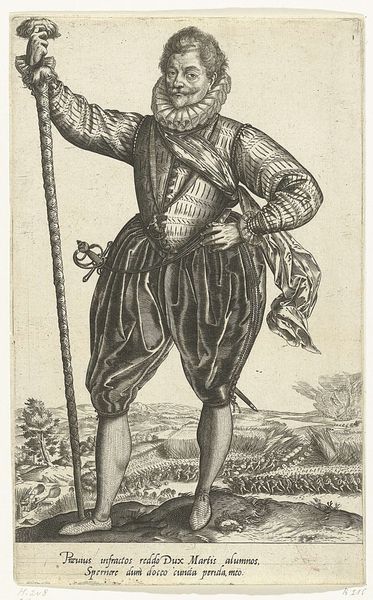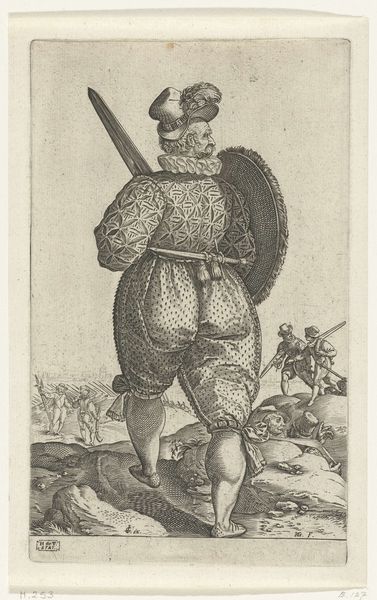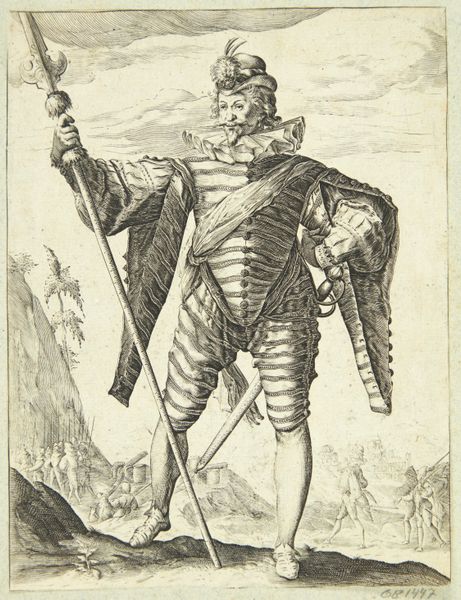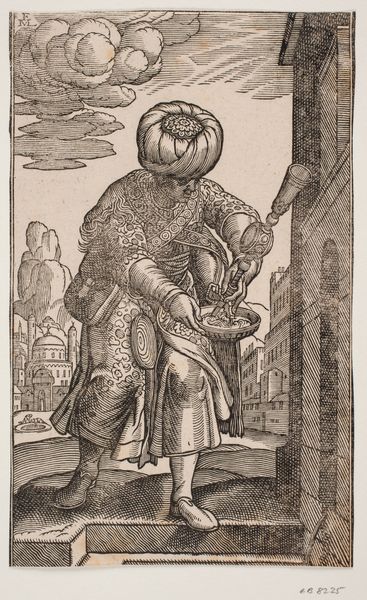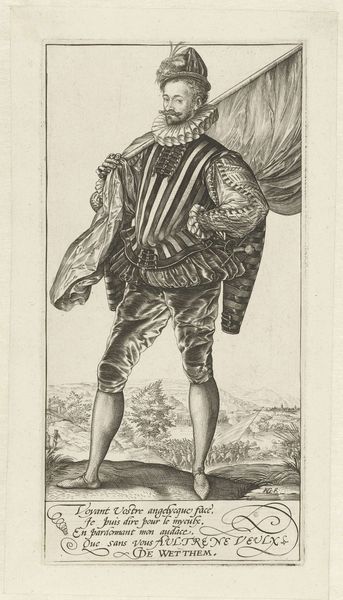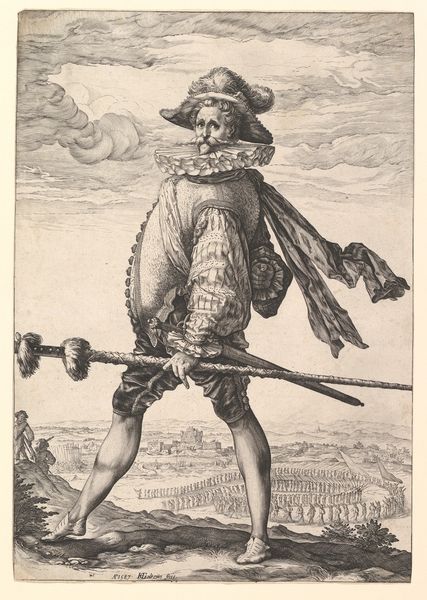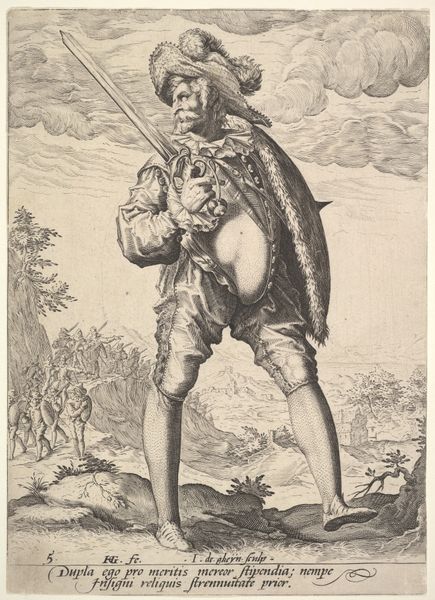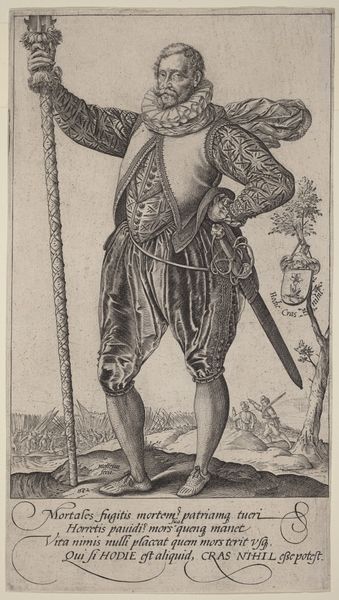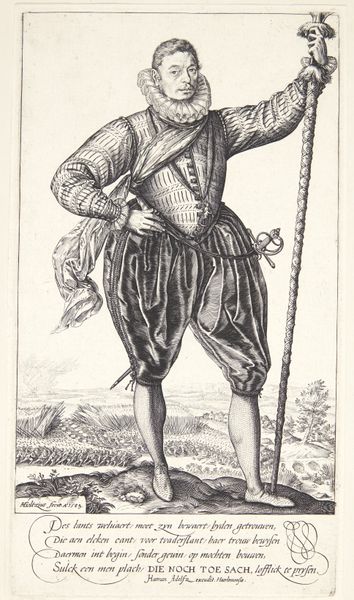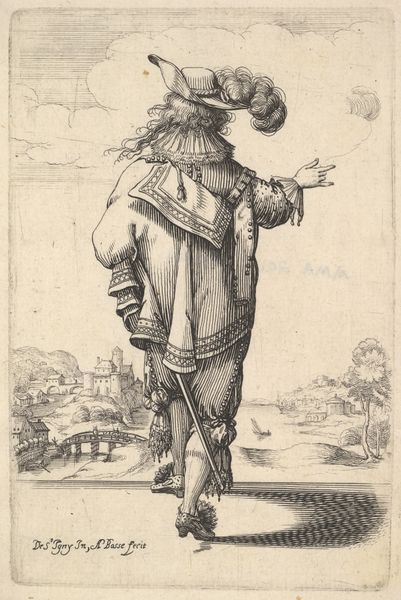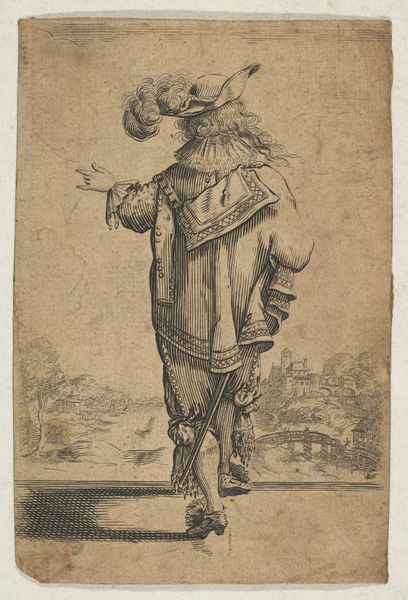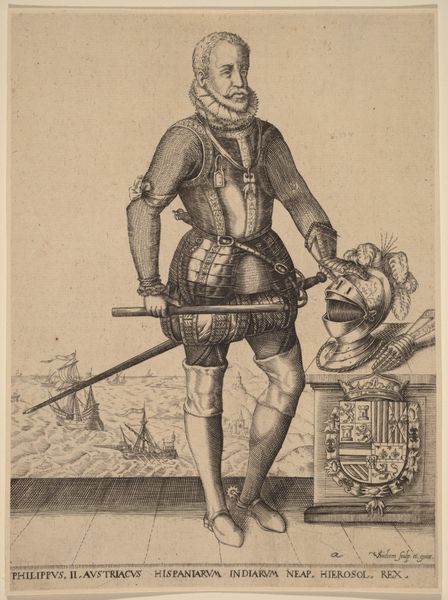
print, engraving
#
portrait
# print
#
mannerism
#
11_renaissance
#
portrait drawing
#
history-painting
#
engraving
Dimensions: sheet: 27.2 × 16.7 cm (10 11/16 × 6 9/16 in.)
Copyright: National Gallery of Art: CC0 1.0
Curator: Here we have a print from 1583, attributed to Hendrick Goltzius, entitled "Stanislaw Sobocki (?)." It’s an engraving, showcasing a full-length portrait against the backdrop of what appears to be a rather active battlefield. Editor: Oh my! My first impression? Intense. And slightly overwhelming. All that detailed hatching… it’s a lot for the eye to take in, isn’t it? It almost feels like visual overload – but a powerful one. Curator: Precisely. The Mannerist style really emphasizes that sense of artifice and drama. We see a highly stylized representation of power and status. The subject's clothing, the ruff, the sword, are all meant to convey a certain image. The print also alludes to military engagements; notice the figure’s placement amidst a chaotic battle scene. The portrait almost becomes a form of propaganda. Editor: Propaganda, yes, but also such…vulnerability? The man is decked out in finery, of course, yet somehow, there's a real fragility to the face. It's in the eyes, I think. All the bravado can't quite mask the human underneath. Plus, that little Latin inscription floating up there! It says "Both by nature and art"... I'm wondering, is it the man, is it the artwork that they were referring to with that phrase? Both, perhaps? Curator: A fascinating observation. Contextually, printmaking in the late 16th century served an important function in disseminating information and shaping public perception. So, engravings of figures like Sobocki circulated amongst a broader audience, reinforcing certain narratives around leadership and virtue. What do you think about that backdrop, then? It sets a certain scene. Editor: Honestly, it just seems busy to me; chaotic. It’s visually interesting, but I feel a bit disconnected from it because the figure and the warfare backdrop are separate entities in the same scene. It gives me the sense that our fellow may be entirely estranged and insulated from war’s horrors; almost untouched, while all hell breaks loose down the slope. Curator: That's a compelling interpretation. The division could indeed be symbolic of the social distance between a leader and the led, between those who command and those who fight. What an efficient artistic device of commentary! Editor: Efficient, and maybe… sad? Here's a fancy fellow, on a windswept hill, perhaps with little comprehension of the mayhem unraveling because, let’s be candid, none of that bothers him personally! Alright! Curator: Well, it’s amazing how this engraving allows us to glimpse into not only the man it depicts but also the society, and its mechanisms for creating figures of celebrity, that made this kind of representation necessary in the first place. Editor: Absolutely. And how art then offers, even four centuries later, opportunities for alternative stories. Makes you wonder what stories haven't been fully printed yet… in every sense of the word.
Comments
No comments
Be the first to comment and join the conversation on the ultimate creative platform.
